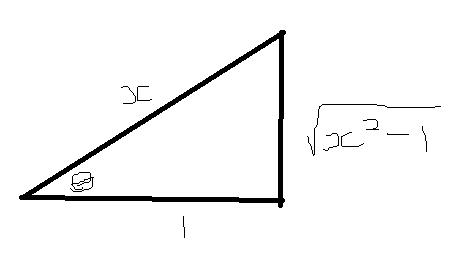What is the derivative of this function #arcsec(x^3)#?
2 Answers
Explanation:
For this you need to know what the derivative of arcsec(x) is.
You can derive it fairly easily:
In the last statement I simplified
If you draw a triangle such that sec(angle) = x, you can understand why it works:

you can see that
Now we know the derivative of arcsec(x) and just need to apply a little chainrule to get our answer:
Explanation:
If
Differentiate implicitly:
Now, for
and:


